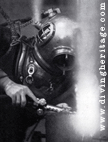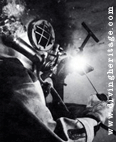SALVAGE:
In-Water INSPECTION:
- REASONS for Inspection
- Survey Inspection EQUIPMENT
- VESSEL In-Water Surveys
- Marine INFRASTRUCTURE Surveys
- MOORING Survey Inspection
- General Survey Inspections
- CORROSION Inspection
- Measuring Metal Thickness
- R.O.V. Inspection
In-Water CLEANING:
- WHY Cleaning? HOW to clean?
- HULL and RUDDER
- PROPELLER (cleaning/polishing)
- Marine INFRASTRUCTURE
- Sacrificial ANODES
- Water JETTING (high and low pressure)
In-Water REPAIRS, MAINTENANCE:
- Shipwork
- Cofferdam
- Marine INFRASTRUCTURE (overview)
- Single Point Mooring System (CALM & SALM)
- Wet WELDING & CUTTING
CIVIL WORKS & ENGINEERING:
- Dredging & Excavation off small BARGE
- Dredging, Jetting, Air-Lift, Dewatering by DIVERS
- Underwater DRILLING & BREAKING
- POST, PIPE, HOLLOW Section PILING with Portable hydraulic Hammer
- Maritime CONSTRUCTION
- Maritime DEMOLITION
- Marine OUTFALLS & Diffusers
- PIPELINES installation & maintenance
- Engineering
SEABED & EARTH ANCHORING:
- Cyclone Anchor Lines for rental

- MOORING Line: what's the (best) choice?
- HELICAL / SCREW Anchors information
- SCREW Anchors Mooring Systems
- PIPELING Anchoring
- Jetty & Walkway FOUNDATIONS screwing
- Expending Rock Anchors
- Grouted Rock Anchors
- Instant Foundation Anchors
- Earth Retention
![]()
![]()
Williams Form Engineering Corporation
- TOWAGE, Dive Support Vessel, Barges:
~ ~ ~ ~ ~ ~ ~ ~
Subsidiaries:
~ ~ ~ ~ ~ ~ ~ ~
Other useful Websites:
Diving
- ADAS Training Courses/job/careers
- New Zealand School of Commercial Diving Training
- Commercial Diving New Caledonia
Nautical Institutions
- IMCA International Marine Contractors Association
- BIMCO Baltic & International Maritime Council
- IMO International Maritime Organization
- Institute of Chartered Shipbrokers
- Institute of Marine Engineering Science and Technology
- International Federation of Shipmasters’ Associations
- International Ship Managers’ Association
- Maritime and Coastguard Agency
- Nautical Institute
- Lloyd’s List
Maritime Information

ABC Diving® Ltd
Port Vila, P.O. Box 3242 VANUATU South PacificComplete Diving Services to Vessels & Civil Engineering Industry
Please, contact us for:
INSPECTION Diving



In compliance with all major classification societies, ABC Diving performs:
Corrosion Inspection
Corrosion surveys are essential to any inspection programme. As steel and salt water are very corrosive combination, much attention is directed to the problem.
They are many different types of corrosion, each produced by different causes. They may occur alone or simultaneously. Some of these types are listed below:
- Dissimular metals in close proximity (galvanic)
- Fretting corrosion
- Biological corrosion
- Stress corrosion and fatigue
- Erosion corrosion
- Crevice corrosion and concentration cell corrosion
- Hydrogen attack and embrittlement, etc, etc.
The two that are the most interest to the diver are 'general corrosion' (an even loss of metal) and 'pitting corrosion' (localised areas of concentrated metal loss).
The present engineering approach to these problems has two prime aspects:
- To built-in at the design stage, an extra thickness of steel as a corrosion 'allowance', normally about 20-30 mm in the splash zone.
- To attempt to prevent corrosion. The main protection methods are cathodic protection (sacrificial anode, impressed current) and protective coatings (electrically insulating cover).
Corrosion inspection has three important objectives:
- To find out if the corrosion protection systems are actually working, by checking:
- That the coating is intact
- That the coating remains bonded to the steel
- That the anodes are still in place
- That the electrical circuit still exists between the anode and the structure (check continuity strap)
- That the electrical potential between the structure and the seawater is adequate by comparison against a reference half-cell indication, using a CP meter.
- To find and measure corrosion damage by:
- Measuring the thickness of steel for general corrosion, using ultrasonic thickness meters, commonly called 'D' meters
- Measuring the extent and depth of pitting corrosion, using pit gauges.
- To help plan the maintenance of corrosion protection systems by:
- Measuring the dimensions of anodes to find the rate of erosion and thereby estimate the remaining life of an anode
- Assessing the condition of the protective coating to find out if and when maintenance is required.
We can provide you with thickness of steel measure, without the need to remove coating (use of multiple echo) and even on the most heavily corroded metals.
°°°°°°°°°°°°°



